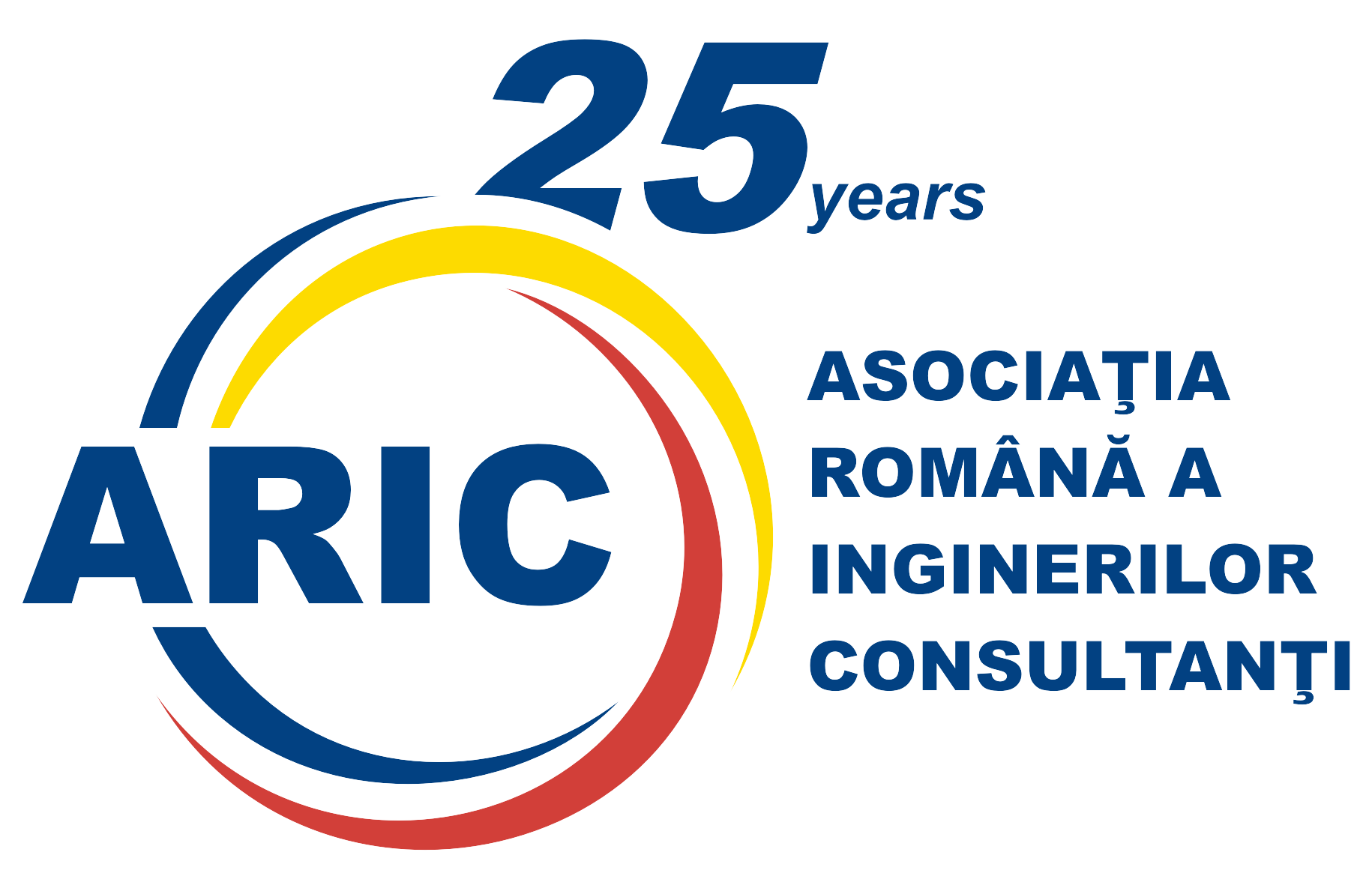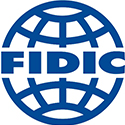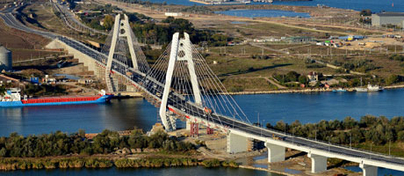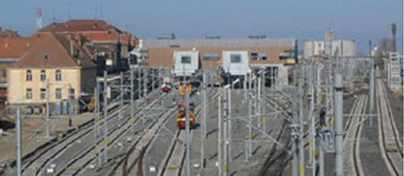STATUTE
Adopted within the General Shareholders’ Meeting, on September 17th 2014, at Bucharest.
Chapter I NAME, LEGAL FORM, MAIN OFFICE, DURATION
Article 1 Name of the association
Name of the association: ROMANIAN ASSOCIATION OF CONSULTING ENGINEERS.
Article 2 Legal form of the association
The ROMANIAN ASSOCIATION OF CONSULTING ENGINEERS is a professional, non-governmental, non-profit, non-political organization.
Article 3 Main office of the association
The ROMANIAN ASSOCIATION OF CONSULTING ENGINEERS is headquartered in Bucharest, Crystal Tower Building, 48 Iancu de Hunedoara Blvd., District 1.
Article 4 Duration of the association
The association has been established for an unlimited period, as of the date of its incorporation.
Chapter II PURPOSE AND OBJECTIVES OF THE ASSOCIATION
Article 5 Purpose of the association
The purpose of the ROMANIAN ASSOCIATION OF CONSULTING ENGINEERS is to promote and develop the engineering and consulting activity in Romania.
Article 6 Objectives of the association
The ROMANIAN ASSOCIATION OF CONSULTING ENGINEERS has the following objectives:
(1) Gather consulting engineering companies and the Independent Consulting Engineers into the ROMANIAN ASSOCIATION OF CONSULTING ENGINEERS;
(2) Represent the consulting engineering activity from Romania at all levels;
(3) Promote the image of the Consulting Engineer;
(4) Increase the association role in terms of its authority in the field of the consulting engineering profession;
(5) Promote the best practice standards among the associated members;
(6) Promote and develop the economic viability of the consulting engineering activity;
(7) Promote quality in the consulting activity as well as in the related activities carried out within the consulting engineering field;
(8) Promote the compliance with the Code of Ethics and the professional integrity;
(9) Promote the commitment to sustainable development;
(10) Release information of interest for all its associated members.
(11) Print, publish and release books, magazines, periodicals and other materials related to the professional activity.
Article 7 Collaboration
For achieving its objectives, the association may conclude collaboration agreements and partnerships with national or foreign public institutions or with other associations and foundations.
Chapter III CAPITAL ASSETS, RESOURCES
Article 8 Capital assets
The capital assets of the association include movable assets, immovable assets and financial resources.
Article 9 Resources of the association
The resources of the association include:
(1) The annual membership fees paid by the members;
(2) Revenues gained from selling the printed publications of the association;
(3) Revenues gained from seminars or other meetings organized by the association or for its benefit;
(4) Donations and sponsorship from natural persons, legal persons or public institutions;
(5) Grants and subsidies;
(6) Revenues gained from the association’s assets.
Article 10 Use of resources
The revenues and the assets of the association will be used only for the purpose and the objectives of the association.
Chapter IV THE CAPACITY OF MEMBER OF THE ASSOCIATION
Article 11 Members of the association
The association is comprised of:
– Voting members,
– Honorary members, and
– Affiliated members.
All the members of the association have to adhere to the Code of Ethics and to the principles of professional integrity.
Article 12 Voting members
Any natural or legal person who gains revenues from providing consulting engineering services, who adheres to the Code of Ethics of the Consulting Engineer and who applies for admission in the association can become a voting member.
To gain admission as a voting member, the applicant must prove that his own articles of association and company contract (if any) are compatible with the memorandum of association and with the Code of Ethics of the Consulting Engineer.
In particular:
(1) Professional status
In exercising this profession, the Consulting Engineer has to act in the legitimate interest of his/her client and to fully comply with the Code of Ethics.
(2) Independence
The Consulting Engineer always has to act in the interest of the project.
The recommendations, opinions and decisions of the Consulting Engineer must not be influenced in any way by the relationships with other persons or organizations.
(3) Competence
The Consulting Engineer must possess the necessary know-how and experience to accomplish his mission and to continue his permanent training.
For natural persons, this requirement is considered to be observed only after the accumulation of at least 10 hours of professional training per year.
For legal persons, this requirement is considered to be observed only after accumulating at least 10 hours of professional training per year by at least a third of the personnel involved in the consulting activity.
Professional training means: participation in courses or events in the consulting engineering field (conferences, seminars, workshops, round tables, exchange of experience etc.) acknowledged by the association.
If, following 3 consecutive years, the association member cannot give proof of the professional training required, then, the respective member is liable for being excluded from the association.
(4) Incompatibilities
The association will not admit as members any governmental organizations or design departments of construction companies.
Article 13 Admission procedure of the voting members
(1) An applicant who wishes to be admitted as a voting member will submit the following to the Secretary of the association:
(a) a written request accompanied by:
(i) for trading companies: a copy of the articles of association, a copy of the company contract (if any) and a list of the representative personnel,
or
(ii) for natural persons, an updated CV,
and
(b) a formal declaration of adherence to the Code of Ethics and to the principles of professional integrity.
(2) The Board of Directors will decide upon majority the admission or rejection of the request.
Article 14 Non-voting members
The association may admit non-voting members:
(1) Honorary members: natural persons who offered remarkable services to the association or to the profession,
and
(2) Affiliated members: natural persons, trading companies, or non-governmental organizations interested in the consulting activity and in supporting the objectives of the associations.
Chapter V WITHDRAWAL OF MEMBERS
Article 15 Withdrawal conditions and procedure
(1) The withdrawal from the association is possible upon a request addressed to the association, registered with the secretariat of the association.
(2) The applicant will pay the membership fee for the entire month in which the withdrawal request is registered.
Chapter VI SANCTION AND EXCLUSION OF MEMBERS
Article 16 Exclusion conditions and procedure
(1) Any member, who disobeys the Memorandum of Association, the Association Contract, or the resolutions of the General Assembly of Shareholders or does not pay the membership fee for more than three months, will be notified in writing by the Board of Directors.
(2) Any member who brings prejudice to the interests of the association, disregards the notification of the Board of Directors or does not pay the membership fee for more than 24 months, will be excluded from the association.
(3) The exclusion of the members is decided by the General Assembly of Shareholders, upon majority given by the attending or represented voting members.
(4) The decision of excluding a member can be taken even if the respective member has already filed a withdrawal request.
Chapter VII ORGANIZATION AND GOVERNANCE OF THE ASSOCIATION
Article 17 Association bodies
The association bodies are:
(1) The General Assembly of Shareholders
(2) The Board of Directors
(3) Auditor, or, as the case may be, the Commission of Auditors
Article 18 The General Assembly of Shareholders
(1) The General Assembly comprises of the empowered delegates of the members of the association.
(2) Each voting member is entitled to a single vote.
(3) The voting right of a member shall be suspended if the respective member is more than one year overdue in paying the membership fee.
(4) The voting members can empower in writing the representatives of another voting member. A member is entitled to vote on his behalf at only for one other member upon written power of attorney.
(5) The General Assembly shall meet in ordinary session once a year.
(6) The General Assembly may meet in extraordinary session upon the decision of the Board of Directors or upon a written request addressed to the Board of Directors by at least one third of the voting members.
(7) The Board of Directors will decide upon the date and location of the General Assembly meetings.
(8) The Board of Directors may invite non-members of the association to attend the sessions of the General Assembly, as observers.
(9) The General Assembly meeting is statutory if at least half plus one of the members are attending it or are represented at the meeting.
(10) With the exceptions provided by the law and by this memorandum of association, the General assembly can adopt resolutions upon majority of votes. In case of equality of votes, the decision will be taken by the President of the association.
Article 19 Competence of the General Assembly
The General Assembly has, mainly, the following tasks:
(1) decides upon the number of members within the Board of Directors;
(2) selects the members of the Board of Directors;
(3) selects the Auditor or the Commission of Auditors (as the case may be);
(4) decides the admission of honorary members, upon the proposal of the Board of Directors;
(5) decides the exclusion of members;
(6) approves the Annual Activity Report, the Auditor’s Report and the annual balance sheet;
(7) approves the income and expenses, the balance sheet and establishes the subscription fee for the associated members;
(8) approves the amendment of the articles and memorandum of association;
(9) approves the strategy regarding the future activity of the association;
(10) decides upon the establishment of a subsidiary;
(11) decides upon the dissolution of the association and assigns the liquidators.
Article 20 Board of Directors
(1) The Board of Directors includes an odd number of members, among which the President, a Secretary General, Vice-Presidents and the Treasurer.
(2) The members of the Board of Directors do not act as representatives of the companies in which they activate, but in the interest of the entire association.
(3) The members of the Board of Directors have a mandate of 4 years, with the possibility of being reelected.
(4) In case a member of the Board of Directors can not complete his/her mandate, the Board of Directors can co-opt a substitute until the following elections.
(5) The elected members of the Board of Directors will carry out their activity until the next meeting of the General Assembly and the Board of Directors can propose them for the ongoing mandate as well as for the next mandate.
(6) The annual activity period of the Board of Directors is considered as the interval between 2 ordinary sessions of the General Assembly.
(7) The Board of Directors will assign one of his members for the position of Treasurer.
(8) The authority to sign, on behalf of the association, pertains to the President, Vice-Presidents and Treasurer.
(9) The Board of Directors can adopt decisions upon majority of votes. In case of equal number of votes, the decision-making entity is the President. The decisions can be also taken by correspondence.
Article 21 Competence of the Board of Directors
(1) The Board of Directors ensures the operative management of the association and will be responsible for the activities and management of the association, except for the activities which fall under the competence of the General Assembly.
(2) The Board of Directors will have the responsibility of accomplishing the decisions of the General Assembly and will submit to the latter the annual activity report.
(3) The Board of Directors will manage the funds and the assets of the association, will draft and submit the annual balance sheet to the approval of the General Assembly.
(4) The Board of Directors will express proposals for amending the Memorandum of Association and will submit them to the approval of the General Assembly.
(5) The Board of Directors will decide upon the establishment of any work groups within the association and will coordinate their activity.
(6) The Board of Directors will be liable before the General Assembly.
Article 22 Disputes
Any dispute between the members of the professional association can be brought before the Board of Directors for advice.
The interested party can use the opinion of the Board of Directors but the members of the Board of Directors will not be called to testify in any subsequent legal proceedings.
Article 23 Work groups
(1) For the accomplishment of particular objectives, the Board of Directors can decide upon the establishment of work groups comprising of experts in field.
(2) The work groups act as advisers of the Board of Directors, fulfill specific tasks during the period determined by the Board of Directors and submits reports to the latter.
(3) The leaders of the work groups will be assigned and dismissed by the Board of Directors.
(4) The leaders of the work groups can represent the association only upon a written power of attorney from the Board of Directors.
Article 24 Secretariat
(1) The Board of Directors will be responsible for employing the personnel needed to fulfill the secretariat activity.
(2) The tasks and responsibilities of the personnel will be assigned by the Board of Directors. The personnel will be liable before the Board of Directors for fulfilling the given instructions.
(3) The documents prepared by the secretariat personnel will be issued on behalf of the Association and will be signed by the President of the Association or by the Secretary General of the association.
Article 25 Auditor
The General Assembly will choose an Auditor, or, as the case may be, a Commission of Auditors for a mandate of 4 years. The Auditor/Commission will audit the annual balance sheet of the association and will submit the annual report with the conclusions of the auditing procedure. The activity period of the Auditor/Commission is the same as that of the Board of Directors.
Article 26 Financial year
(1) The financial year starts on January 1st and ends on December 31st each year.
(2) The amount of the annual membership fee of the associated members will be established by the General Assembly. The decision of the General Assembly becomes effective starting from the date when it has been taken. The value of the membership fee is valid throughout the respective year and it is paid during the first semester of the year.
(3) The Board of Directors will transmit to the subscribing members the invoices related to the payment of the membership fee until January 15th.
(4) Each new associated member will pay, upon admission in the association, the proportional share of the fee referring to the interval remaining until the end of the year. The decision of being admitted in the association becomes effective only following the payment of the membership fee.
(5) The honorary members and the affiliated members will not pay a membership fee.
(6) A part of the amount collected from the membership fees will be used for paying the association fee to the International Federation of Consulting Engineers (FIDIC) and to the European Federation of the Consultancy Associations (EFCA).
Article 27 Responsibility for the association obligations
In case of insolvency, the Board of Directors will establish the financial contribution of each associated member necessary to cover the obligations of the association proportionally to the annual fee.
Article 28 Amendment of the memorandum of association
The amendment of this memorandum of association can be made only upon the vote of two thirds of the number of voting members attending the meeting.
Article 29 Dissolution and liquidation of the association
(1) The dissolution and liquidation of the association may be proposed by the Board of Directors or by at least two thirds of the number of the associated members.
(2) For the dissolution and liquidation of the association the positive vote of at least two thirds of the voting members attending the meeting is needed.
(3) In case the decision of dissolving the association has been taken, the responsibility of the liquidation falls to the liquidators assigned by the General Assembly.
(4) When the association is dissolved, the payments will be made according to the following sequence:
(a) current expenditures for the administration of the association;
(b) expenditures regarding the liquidation of the association;
(c) other expenditures that might be necessary.
(5) The General Assembly will have available all the assets and liquidities remaining after all the obligations of the association related to the liquidation have been fulfilled. These assets and liquidities will be returned to the members of the association proportionally to the calculated mean of their membership fee for the last 5 years.
Chapter VIII MISCELLANEOUS
Article 30 Applicable law
All the provisions of this memorandum have to be read and interpreted in accordance with the Romanian law.
Article 31 Definition
The term of Consulting Engineer used in this memorandum of association will be interpreted as representing the companies or the persons who have the quality of members of employees of such companies.
Article 32 Association logo
The association logo is represented by the initials of the association, „ARIC”, written in between two semicircles. „ARIC” and the semicircles are written in blue on a white background, as sown below.








